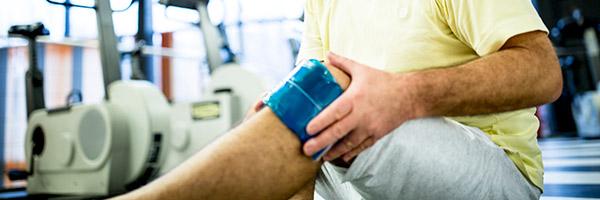6 Natural Ways to Ease Osteoarthritis Pain

Osteoarthritis (OA) affects 31 million Americans. It seems there are practically as many “natural remedies” that promise arthritis relief. Unfortunately, most of them, from copper bracelets to apple cider vinegar, don’t work.
The good news is that there are a few science-backed, drug-free ways to improve OA symptoms. At the top the list: Gentle exercise and maintaining a healthy weight.
In addition to these lifestyle approaches, talk to your MDVIP-affiliated doctor about other ways to feel better with OA. You may benefit over-the-counter pain relievers, injections (cortisone or a joint lubricant) or joint replacement. You may also find additional relief from a handful of drug-free remedies. Consider these six.
1. Heat therapy. Get some heat on those achy joints, such as a paraffin bath for achy hands or a heating pad for sore knees. Research shows regular use can have a real impact on OA pain and stiffness. The likely reason: Poor circulation has been associated with the development of pain, and heat increases blood flow to the joint.
2. Cold therapy. Cold therapy, which involves intentional, regular use of ice packs or cold packs, can help relieve symptoms in different ways. Several studies found that cold therapy improved swelling and pain in people with knee OA.
3. Turmeric. Turmeric extract, also known as curcumin, may be a good option if you’re interested in supplements. Some research suggests that about 1000 mg/day of curcumin may ease symptoms as much as pain medicine. Be sure to ask your MDVIP-affiliated doctor if it’s safe for you, since turmeric interferes with many drugs, including blood thinners.
3. Massage. Swedish massage has been shown to relieve pain, stiffness and physical function in people with knee OA and provide modest benefit in some other types of OA. In addition to physical symptom relief, study subjects with OA consistently report improvement in well-being and quality of life.
Meditation. There’s a well-established link between stress and pain, and meditation is an effective way to reduce both. One study found that a twice-daily meditation program improved pain and function in participants with knee OA. Numerous other studies have come to similar conclusions about the effect of meditation on joint pain.
Acupuncture. The research is mixed on this ancient Chinese practice when it comes to OA symptom relief. Some studies suggest it provides a small benefit. Others suggest it’s no better than sham treatment. However, if you’re looking for an alternative to pain medicine, it may be worth a try. Talk to your MDVIP-affiliated doctor, who may be able to refer you to a reliable practitioner.
